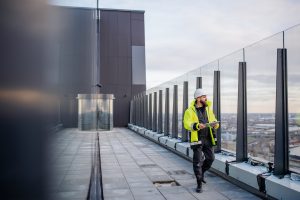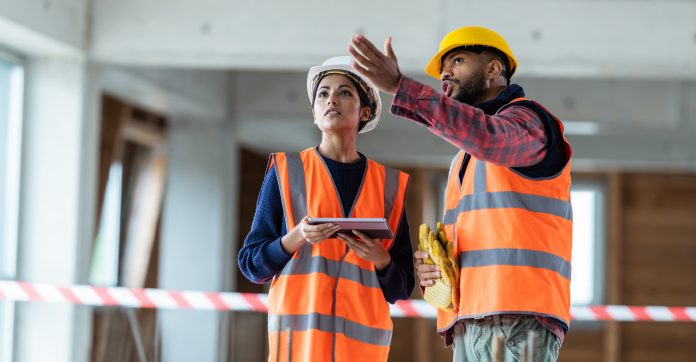More than three years after the Grenfell Tower fire, hundreds of thousands of people are living in high-rise properties fitted with dangerous cladding. Mark Clinton, head of the construction and engineering group at law firm Irwin Mitchell, offers a 10-point plan to point policy in the right direction
Government policy is holding back the progress needed to resolve the “cladding crisis”, particularly in the way it is dragging its feet in providing sufficient funding to protect leaseholders from bearing the cost of remediation works.
This is the conclusion of a new report, Cladding: A Way Forward – the topic of a recent panel discussion hosted by Irwin Mitchell for over 400 guests from across the industry who came to share their expert opinion on the cladding crisis.
This discussion and report offer an insight into the key issues that have contributed to the cladding crisis, including looking at the different perspectives of those affected by it including leaseholders, freeholders and building owners, builders, developers and construction workers, surveyors and fire safety engineers, and mortgage lenders and insurers. We also looked at how those affected can move forward.
Many of the findings contained within the report make for uncomfortable reading. Figures suggest as many as 1.93m people are now considered “mortgage prisoners” because of cladding issues, while over 600,000 people in England are currently living in high-rise buildings with dangerous cladding.
Despite the funding that has been made available by the government so far, there is still a significant funding gap in trying to resolve the crisis. In many cases, this means that the cost for remediation work is falling on the leaseholder – a worry that has sadly led to 23% of leaseholders considering suicide or self-harm as a result of the cladding crisis, according to a report by the UK Cladding Action Group.
In February, housing secretary Robert Jenrick announced a further £3.5bn will be made available towards the remediation of unsafe cladding on high-rise buildings over 18m, which is to be paid for through a new Developers Levy, taxing new high-rise buildings in England.
This takes government funding to £5bn but as HomeGround Management’s Eyvind Andresen stated: “The £5bn of government funding is unlikely to touch the sides of the total of the problem.”
Our experts predicted the figure probably needs to be three times as much.
In the wake of the Grenfell tragedy, there has been blame apportioned between various parties and causes, including the government’s regulatory failure. All agreed there needs to be a more coherent strategy if there is to be a permanent solution provided soon.
While the Building Safety Bill 2019-20 was announced in the Queen’s Speech on 19 December 2019, which aims to put in place new and improved regulatory systems for building safety and construction products, Irwin Mitchell’s Claire Petricca-Riding spoke of the lack of continuity and joined-up thinking between Building Regulations and planning in terms of monitoring safety properly.

A clear call for change
Our report is a clear call for change: the government needs to grab the bull by the horns and develop a consistent strategy for how it handles the situation in the years ahead. This is why we have put together a 10-point plan – a clear roadmap on the action points the government and residential property sector needs to consider for solving the crisis once and for all, rather than leaving unsuspecting leaseholders footing the bill for unrealistic and financially crippling amounts.
Our recommendations are as follows:
- Upfront funding for leaseholders in order to meet the financially crippling costs of remediation works, which they should not have to repay. This can then be offset by future recovery from those deemed to be at fault.
- Access to government funding for remediation work must be made easier and faster, with a significant increase in the fund to cover all dangerous materials or defects including those recovered by remediation. A figure of £15bn is proposed, which it is understood will cover all dangerous buildings, regardless of height. There is a need for proper collaboration by government and the key participants in these projects to develop workable and fair agreements that enable the funding to be delivered without unnecessary risks to those accessing it and to avoid delay.
- The government should give freeholders a statutory right to install, maintain and charge for new systems that will help make properties safe, including whole-building sprinkler systems and fire alarms. While leaseholders would pay these costs where not covered by the recently announced waking watch fund, it would reduce the need for a waking watch.
- Planning and Building Regulations must have greater cohesion and work in tandem with digital and regular on the ground oversight. Online details of at-risk properties should be made available to all, including potential homebuyers.
- There needs to be an overhaul of the privatised building control, with clear, integrated lines of responsibility as well as using current technologies more effectively.
- Certification of safe building materials and methods must be similarly overhauled, so that the failings exposed by the Grenfell Tower inquiry can never be repeated.
- Special provisions must be made for disabled occupants of high-risk buildings as quickly as possible.
- While the Building Information Model (BIM) was developed in the UK and adopted across the world, we need to continue to standardise recording keeping and Modern Methods of Construction.
- We need to accelerate the provision for surveyors to be able to issue EWS1 certificates.
- We must be able to look back at the Grenfell Tower disaster as a watershed moment for the industry and its regulators.
People’s safety is the greatest driver for the construction industry to continue with remediation as quickly as possible – but the industry needs the government’s support with funding agreements.
The construction industry also needs to consider its role in the whole issue. Adversarial contracting, risk-dumping, lowest price tendering, trading on wafer-thin profit margins and training and skills should all come under the microscope. Whether the industry can change its ways is doubtful, but if Grenfell can’t bring fundamental change, it’s difficult to see what can.
Please download the full report here.
Mark Clinton
Head of the construction and engineering group
Irwin Mitchell
+44 (0)808 301 5946
Twitter: @irwinmitchell
LinkedIn: irwin-mitchell


















It is factually incorrect that the Government is providing £5 billion, and this stated only a sentence after saying that £3.5 billion of new money will be funded by a tax on large developers who build high-rises in future. The Government isn’t providing that £3.5 billion: housebuilders are, and perhaps their future flat owners in the form of higher sale prices, if these can be achieved.
The result of this shoddy policy is that good builders and developers are being forced to pay for the errors of poor ones, councils like Kensington (which outsourced the risk at Grenfell Tower to an inadequate management company, and it appears will face *no* repercussions in the form of financial penalties or people losing their jobs), and successive Governments which permitted the development of very poor testing regimes and building control monitoring services.
High rise remediation works should be paid for those who failed: the material suppliers, the councils, the building control organisations and most of all the general taxpayer and our representatives and civil servants in central Government. This is a collective failure, and the cost should fall not on leaseholders or builders and developers who have done nothing wrong.
The cost of opportunistic improvements that benefit leaseholders, such as better insulation and fireproofing, which can be done at the same time as replacing the cladding, *should* however fall on the leaseholders, because they are the beneficiaries.